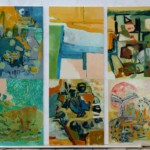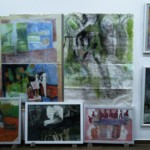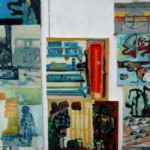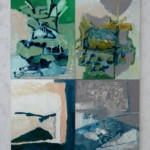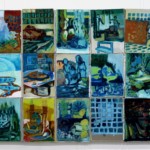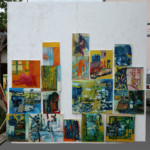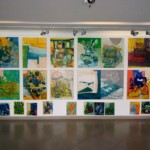Artist Statement
There is a minute of time, in some phase of a painting, that is crucial…maybe less than a minute. I don’t think about the quality of a picture. There is a certain charge in painting to collapse the existing composition and create a new one.
The starting points are discarded objects and the creation of their new relations according to the principle of free alternations. I collect various discarded materials, erase their previous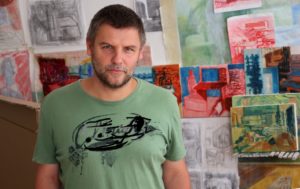 meanings, unfold them and rearrange them on the work table, in order to transfer them to the painting. In this process, which occurs automatically, many anti-objects undergo an unconscious, spontaneous transformation. And so, cardboard, plaster, wax objects transferred to canvas under painterly treatment become naturalized and grow into associations of structures of organic origin, building a game on the relation of contrasts: inside to outside, human intervention – nature, suppression and domination.
meanings, unfold them and rearrange them on the work table, in order to transfer them to the painting. In this process, which occurs automatically, many anti-objects undergo an unconscious, spontaneous transformation. And so, cardboard, plaster, wax objects transferred to canvas under painterly treatment become naturalized and grow into associations of structures of organic origin, building a game on the relation of contrasts: inside to outside, human intervention – nature, suppression and domination.
On a conceptual level, I postulate a practice that is closest to the enthusiasm and freedom of children’s play. Freshness and unpredictability lie in rejecting the creation of pre-planned patterns, ideal positions, and rounded processes. I choose felerity and imperfection, and remaking and flexibility in re-creation are only subject to the laws of mass chaos of a children’s playground.
About Aleksandar Djordjevic
Alexander’s work, formally viewed from picture to picture, is based on dealing with purely plastic elements of building the picture as a whole per se. They are characterized by varying plans, a sudden jump from one form to another, a dynamization of colors that strives for purely rudimentary sensory stimulation.
The process that starts from the spatial situation of the elements on the work table is transferred to the two-dimensional frame of the canvas. However, even then, the images created in this way do not figure as rounded, self-sufficient objects, artifacts that will be ready for exhibition as such. The paintings continue to exist only as an element that will be re-dynamized and re-arranged in the new spatial situation of the gallery. Aleksandar uses images in a completely unconventional way to promote the idea of the possibility of interaction within any given space, even the gallery itself.
Perhaps the freedom of a mind unencumbered by canons and previous isms in the perception of things allows us to ask a completely paradoxical question: Does the painting actually need a wall to ensure its representativeness and function?
Jelena Veljković Wilson, Art historian

